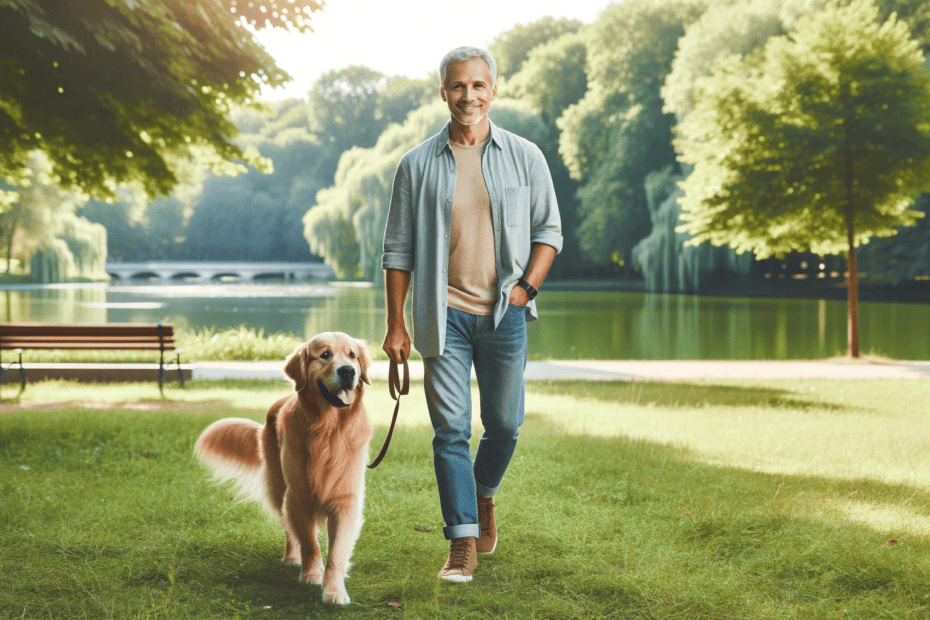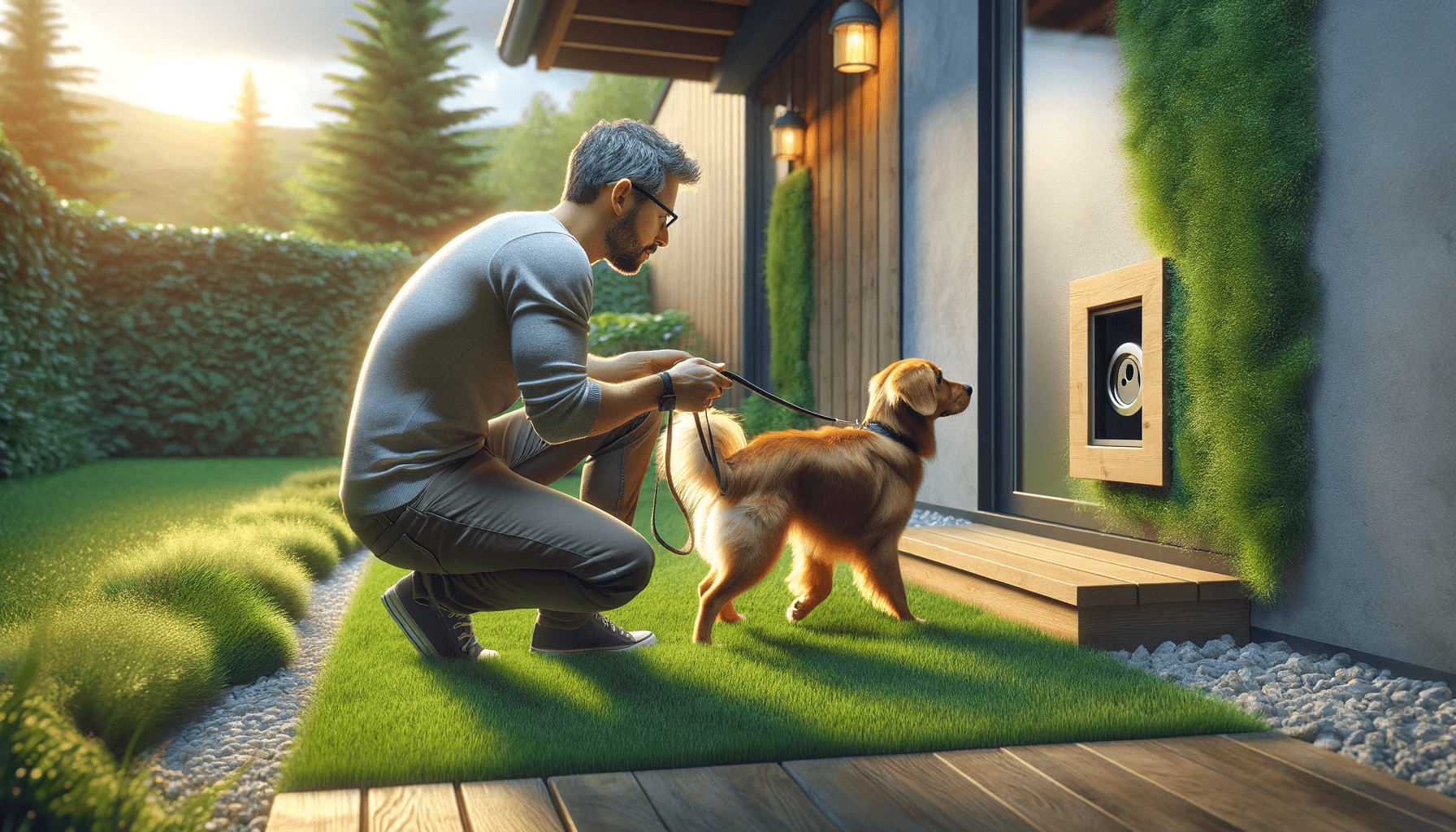Are you struggling with a leash reactive dog? Don't worry, we've got you covered!
In this article, we will share 7 effective techniques to help you manage and improve your dog's leash reactive behavior.
From counterconditioning to desensitization exercises, positive reinforcement training, and redirecting attention strategies, we'll give you the tools you need to transform your walks into enjoyable experiences.
Say goodbye to leash pulling and hello to a calmer, more relaxed dog!
Key Takeaways
- Counterconditioning techniques can help change a dog's emotional response to triggers and create positive associations with them.
- Desensitization exercises gradually expose the dog to triggers, rewarding calm behavior during exposure.
- Positive reinforcement training methods, such as clicker training, can be effective for leash reactive dogs by rewarding alternate behaviors.
- Attention redirection strategies, such as using engaging toys and body language cues, can help redirect a leash reactive dog's attention.
Counterconditioning Techniques
You can effectively address leash reactivity in your dog by implementing behavior modification techniques, specifically counterconditioning protocols. Leash reactivity, characterized by aggressive or fearful behavior towards other dogs or people while on a leash, can be a challenging issue to overcome. However, with the right approach, you can help your dog become more calm and relaxed during walks.
Counterconditioning involves changing your dog's emotional response to the trigger that causes their reactive behavior. The goal is to create positive associations with the trigger, such as other dogs or people, by pairing it with something your dog loves, like treats or playtime. This helps to replace the negative emotions with positive ones, gradually reducing their reactivity over time.
To start, identify your dog's threshold, or the distance at which they begin to react. Begin counterconditioning at a distance where your dog remains calm and focused on you. Gradually decrease the distance between your dog and the trigger, always rewarding them for calm behavior. Consistency and patience are key during this process.
It's important to note that counterconditioning may not work for all dogs, and professional guidance may be necessary. Consulting with a certified dog trainer or behaviorist can provide you with a personalized plan and guidance to effectively address leash reactivity in your dog.
Desensitization Exercises
Start with a gradual introduction of desensitization exercises to help your leash reactive dog overcome their fear or aggression towards triggers. Desensitization is a technique that involves slowly exposing your dog to the trigger that causes their reactivity, while ensuring that they remain calm and relaxed throughout the process. This gradual exposure helps to decrease their reactivity over time and build their confidence.
To begin desensitization exercises, identify the triggers that cause your dog to react on the leash. It could be other dogs, bicycles, or even loud noises. Once you have identified the triggers, start by exposing your dog to them from a distance that doesn't elicit a reactive response. Gradually decrease the distance over multiple sessions, always ensuring that your dog remains calm and relaxed.
During the desensitization process, it's crucial to reward your dog for their calm behavior. Use treats, praise, or their favorite toy to reinforce positive behavior. This positive reinforcement helps your dog associate the trigger with something positive, further decreasing their reactivity.
Consistency and patience are key when working on desensitization exercises. It may take several sessions or even weeks for your dog to show progress. Remember to always go at your dog's pace and never force them into uncomfortable situations. With time and practice, desensitization exercises can help your leash reactive dog overcome their fears and build their confidence.
Positive Reinforcement Training Methods
Begin implementing positive reinforcement training methods to effectively address leash reactivity in your dog. These techniques focus on rewarding desired behaviors and using positive reinforcement to encourage your dog to make better choices. Here are four effective methods to try:
- Clicker training for reactive dogs: Clicker training is a popular positive reinforcement technique that involves using a clicker to mark the exact moment your dog performs a desired behavior. By pairing the click with a reward, such as treats or praise, you can reinforce the positive behavior and help your dog associate it with something enjoyable.
- Using positive reinforcement for leash reactive dogs: Positive reinforcement involves rewarding your dog with treats, praise, or play whenever they exhibit calm and non-reactive behavior on the leash. When your dog sees other dogs or stimuli that usually trigger reactivity, redirect their attention to you and reward them for focusing on you instead.
- Rewarding alternate behaviors: Teach your dog alternative behaviors to replace their reactive ones. For example, when your dog sees a trigger, ask them to perform a simple command like 'sit' or 'watch me' and reward them for complying. This helps redirect their focus and reinforces positive behavior.
- Consistency and patience: Consistency is key when using positive reinforcement training methods. Set clear expectations for your dog and reward them consistently for exhibiting the desired behavior. Remember to be patient, as it may take time for your dog to fully understand and respond to the training.
Redirecting Attention Strategies
To continue addressing leash reactivity, implement redirecting attention strategies to effectively manage your dog's reactions on the leash. One effective approach is to use engaging toys for leash reactive dogs. These toys can provide a distraction and redirect your dog's attention away from the trigger that's causing their reactive behavior. Choose toys that are interactive and mentally stimulating, such as puzzle toys or treat-dispensing toys. By engaging your dog's mind and providing a positive outlet for their energy, you can help them focus on the toy instead of reacting to other dogs or stimuli.
In addition to using toys, you can also use body language cues to redirect your dog's attention. When you notice your dog becoming reactive, try using a command such as 'look' or 'watch me' while using a hand signal to direct your dog's gaze towards you. This can help shift their focus away from the trigger and onto you. It's important to practice these cues in a controlled environment before attempting them in a real-world situation. Consistency and repetition are key to reinforcing these redirecting attention strategies.
Clicker Training for Leash Reactive Dogs
Use a clicker to mark and reinforce desired behaviors in leash reactive dogs. Clicker training is a highly effective and popular method for training dogs, including those who are reactive on the leash. Here are four reasons why clicker training can be beneficial for leash reactive dogs:
- Clear Communication: The clicker provides precise timing and clear communication to your dog. It marks the exact moment your dog displays the desired behavior, making it easier for them to understand what you're asking of them.
- Positive Reinforcement: Clicker training focuses on positive reinforcement, using treats or rewards to encourage and reinforce good behavior. This positive association helps your dog associate their desired behavior with something positive, making them more likely to repeat it in the future.
- Reduced Stress: Unlike some alternative training methods, clicker training is gentle and non-aversive. It focuses on rewarding good behavior rather than punishing unwanted behavior. This approach can help reduce stress and anxiety in leash reactive dogs, creating a more positive and enjoyable training experience.
- Increased Engagement: Clicker training encourages dogs to actively participate in the training process. By using the clicker as a marker, you can capture and reinforce small increments of progress, keeping your dog engaged and motivated to continue learning.
Impulse Control Exercises
To effectively manage leash reactive dogs, it's crucial to incorporate impulse control exercises into their training regimen. These exercises focus on distraction training techniques, which help dogs learn to stay calm and composed in the face of triggers.
Additionally, calming exercises for dogs can help them develop self-control and reduce their reactive responses. By reinforcing impulse control through consistent training and positive reinforcement, you can help your leash reactive dog become more manageable and improve their behavior on walks.
Distraction Training Techniques
Practice impulse control exercises with your leash reactive dog to help them manage their reactions and stay focused on you during walks. Here are four distraction training techniques that can be effective in improving your dog's behavior:
- Use interactive toys: Engage your dog with interactive toys that require mental and physical stimulation. This will redirect their attention and energy away from triggers, helping them stay calm and focused.
- Treadmill exercises: Incorporate treadmill exercises into your dog's routine. This provides physical exercise while minimizing exposure to triggers. Gradually increase the speed and duration to challenge your dog's impulse control.
- Reward-based training: Teach your dog impulse control through positive reinforcement. Reward them for maintaining calm behavior when faced with triggers. This encourages them to make better choices and stay focused on you.
- Controlled exposure: Gradually expose your dog to triggers in a controlled environment. Start at a distance where they can remain calm and gradually decrease the distance over time. This helps desensitize them to the triggers and strengthens their impulse control.
Calming Exercises for Dogs
To help your leash reactive dog develop impulse control, incorporate calming exercises into their routine.
Breathing exercises can be highly effective in helping dogs relax and manage their emotions. Teach your dog to take slow, deep breaths by gently placing your hand on their chest and encouraging them to inhale and exhale deeply. This helps them shift their focus from the triggers that cause their reactive behavior to their own breathing.
Massage techniques can also help your dog relax and release tension. Use gentle, soothing strokes on their back, neck, and shoulders, applying gentle pressure to release muscle tension. This can help your dog feel more grounded and calm, reducing their reactivity when on a leash.
Remember to be patient and consistent with these exercises, and always reward your dog for their progress.
Reinforcing Impulse Control
How can you reinforce impulse control in leash reactive dogs?
Teaching self-control is an important aspect of managing leash reactive behavior. Here are four effective techniques to reinforce impulse control in your dog:
- Reward-based training methods: Use positive reinforcement to reward your dog for calm and controlled behavior. Rewarding them with treats, praise, or toys when they exhibit self-control can help reinforce the desired behavior.
- Set clear boundaries: Establish clear rules and boundaries for your dog to follow. Consistency is key in reinforcing impulse control. Teach them to wait patiently before receiving treats or going through doors, gradually increasing the duration of their self-control.
- Use impulse control exercises: Incorporate exercises that focus on impulse control, such as 'wait' or 'leave it' commands. These exercises help your dog learn to resist the urge to react impulsively and instead wait for your cue.
- Gradual exposure to triggers: Gradually expose your dog to their triggers in controlled environments. This helps them learn to remain calm and composed in the presence of stimuli that may normally trigger a reactive response.
Gradual Exposure to Triggers
Developing tolerance towards triggers is crucial for managing leash reactive dogs. Gradual exposure to triggers is a technique that can help your dog become more comfortable and less reactive on walks. The key to this technique is systematic desensitization and counter conditioning with rewards.
Systematic desensitization involves exposing your dog to the trigger in a controlled and gradual manner. Start by identifying the distance at which your dog becomes reactive, and then slowly decrease that distance over time. For example, if your dog reacts to other dogs at a distance of 20 feet, start by keeping a distance of 30 feet and gradually decrease it as your dog becomes more comfortable.
Counter conditioning with rewards is another important aspect of gradual exposure. Whenever your dog is exposed to the trigger and remains calm, reward them with treats or praise. This helps create positive associations with the trigger and reinforces good behavior.
Remember to be patient and consistent with this technique. It may take time for your dog to build tolerance towards triggers, but with practice and positive reinforcement, you can help them become less reactive on walks.
Frequently Asked Questions
How Long Does It Typically Take to See Results When Using Counterconditioning Techniques for Leash Reactive Dogs?
It typically takes time to see results with counterconditioning techniques for leash reactive dogs. Combining medication with these techniques can be beneficial. Keep in mind that every dog is different, so it's important to be patient and consistent in your training efforts.
Can Desensitization Exercises Be Effective for All Types of Leash Reactive Dogs?
Desensitization exercises for leash reactive dogs can be effective for all types of dogs. By gradually exposing your dog to their triggers in a controlled environment, you can help them overcome their reactivity and learn to remain calm on the leash.
Are There Any Specific Positive Reinforcement Training Methods That Work Best for Leash Reactive Dogs?
To effectively train leash reactive dogs, use positive reinforcement techniques. Incorporate desensitization exercises into their training routine. By rewarding calm behavior and gradually exposing them to triggers, you can help them overcome their reactivity.
What Are Some Effective Redirecting Attention Strategies for Leash Reactive Dogs?
To effectively redirect your leash reactive dog's attention, try using desensitization techniques. By gradually exposing them to triggers at a distance and rewarding calm behavior, you can help them learn to focus on you instead of reacting.
Can Clicker Training Be Used in Combination With Other Training Methods for Leash Reactive Dogs?
Yes, you can combine clicker training with other methods for leash reactive dogs. Clicker training, when used in conjunction with other techniques, can help redirect their attention and reinforce positive behaviors, improving their overall response to leash reactivity.
Conclusion
In conclusion, these seven effective techniques can greatly help leash reactive dogs.
By using counterconditioning, desensitization exercises, positive reinforcement training methods, and redirecting attention strategies, owners can help their dogs overcome their reactive behaviors and have more enjoyable walks.
Additionally, clicker training, impulse control exercises, and gradual exposure to triggers can also be effective in managing leash reactivity.
It is important for owners to be patient and consistent in implementing these techniques, and to seek professional help if needed.
With time and effort, leash reactivity can be managed and improved.






